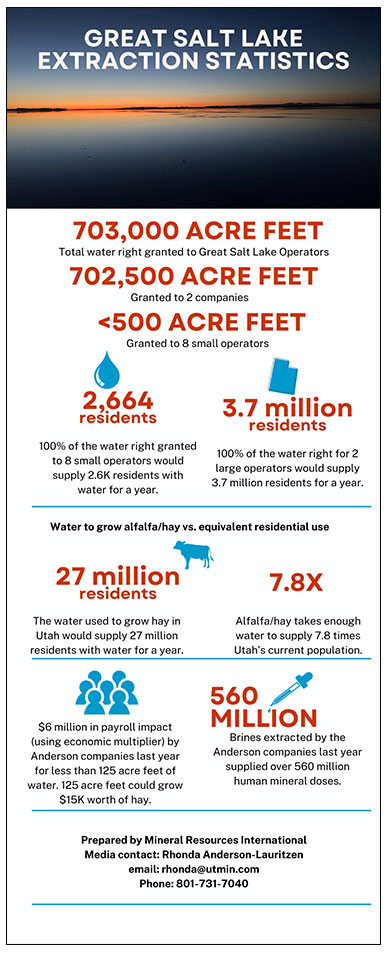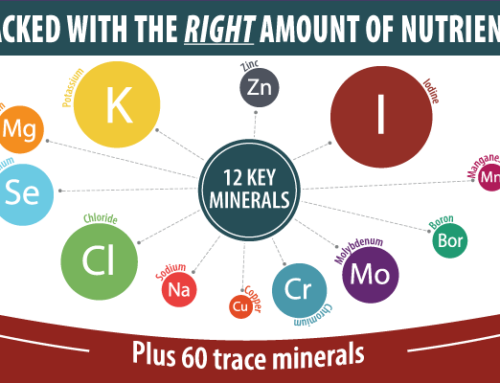On March 12, Utah’s Governor signed HB453 into law, which Speaker of the House Mike Schultz said, “Will probably be one of the most impactful and most important bills that we pass ever in regards to the Great Salt Lake.” The bill received bipartisan support in both the House and the Senate. Mineral Resources International worked behind the scenes with Friends of Great Salt Lake, Speaker Schultz, the bill’s sponsor Casey Snider, and other legislators in support of the bill’s passage.
President Bruce Anderson, who was invited by Speaker Schultz as a guest on the dais on February 2. Anderson, said, “My family’s three-generation legacy on the Great Salt Lake gives us a special stewardship to protect this precious resource.” He added, “We stand in support of this landmark legislation at a critical moment in history. We must ensure that this miraculous lake is preserved forever.”
The Anderson philosophy aligns with the way indigenous people regarded the lake as a sacred place of healing. “We honor the Shoshone people who came before us and whose use of the lake was kept in balance.” Tribal leaders of the Shoshone nation have had longstanding friendly collaboration with the Anderson family, which continues today.
The Great Salt Lake has caught the world’s attention because extended drought conditions, excessive water diversion, and a current legislative framework that encourages water overuse. These conditions have brought it to the brink of an ecological collapse, not unlike other terminal lakes in the world.
When asked about whether its operations are sustainable, Bruce Anderson explains that the amount of water used by his family’s companies is scarcely a drop compared to other factors. For example, there are ten water users on the Great Salt Lake, which collectively have 703,000 acre feet. Two of those operators have more than 702,500, leaving less than 500 allocated to the remaining eight.
Anderson added that, “We are also mindful to not use any more than needed, even though our allocation is higher. Our commitment is to maintain an operation that is environmentally sustainable forever.”
HB453’s sponsor Casey Snider explained why this legislation was so critical. “We face challenges both in precipitation and water demands that that our communities have never been faced with. The ecological risks, the environmental risks, and the human risks to doing nothing are catastrophic or could be catastrophic.” He explained that our legal framework allows operators to consume every available drop. That framework does not recognize the inherent value of the water remaining in the lake.
Another statistic in Utah’s arid climate is shocking—what it takes to grow the notoriously thirsty alfalfa and hay crops. Last year, the water diverted for alfalfa and hay would supply 7.8 times Utah’s current population.
In advocating for this legislation, Speaker of the House Schultz acknowledged the need to balance important and sustainable uses, “These are minerals that we need on a daily basis…These are minerals that are in my vitamins that I take, that are in your vitamins you take. These are minerals that we need every day. The intent is never to put these companies out of business, and nor will it put these companies out of business. The intent is to make sure that we find the right balance, that we put the ecosystem first and the environment first.”
Speaker Schultz also acknowledged the work of companies like those owned by the Anderson family, “I appreciate there’s many mineral companies that have come to the table to support what’s happening here and work in a collaborative effort.”
The Anderson family and its various shareholders express gratitude to the Utah Legislature for passing this landmark legislation, an important step toward saving the Great Salt Lake.







